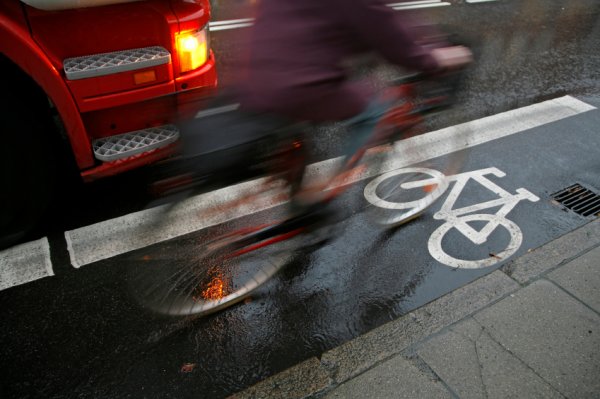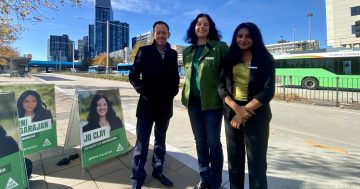
Canberra is at a crossroads, quite literally. We can continue down the road of car-dominated 1960s North American auto planning or we can embrace a city that puts people ahead of cars and allows for diversity, equity and a more sustainable way of life.
The concept of planning our cities around the health and well-being of the population really is nothing new. Some 2630 years ago Aristotle wrote, “We ought to plan the ideal of our city with an eye to four considerations. The first, as being the most indispensable, is health.” Yet, through the political discourse we are having in the Territory in the lead up to this Saturday’s election, you might think otherwise.
One potential government is asking us to continue on the same path and invest in roads and parking infrastructure. Cars and buses have worked for this city in the past and they will continue to work for this city in the future.
The other says cars and buses are part of the solution, but in addition we need to, where possible, move people away from cars. Their solution revolves around the development of a multi-modal transport network that incorporates light rail, buses, walking and cycling.
So what is better for health and the community?
Well today we have a public health crisis in Canberra. According to the 2016 ACT Chief Health Officer’s report, 63% of the adult population in the ACT is overweight or obese and the 25% of our children are similarly overweight or obese.
How is it that in Canberra, that model of the most planned city in the world, that city where we are the most educated, the best paid and where there are 385,000 self proclaimed planners, is also one of the fattest in the world? The answer is that we have planned and built a city for physical inactivity. It is a city that, by its very nature, is car dominated and, unless we change it now, will continue to make us sick.
Today we have freeways surrounding our city, six lane roads bisecting suburbs providing unrivalled access for motor vehicles but cutting people off from each other, our cultural places and open spaces. Indeed, should a Liberal Government be elected in Canberra on Saturday, there are plans for an eight lane road right through the heart of this city. A quick count on an aerial photograph of the Canberra CBD will show at least 14 surface car parks, and this is mirrored through virtually all of our town centres. Why walk when you can drive?
By prioritising the car over active travel (walking, cycling and public transport), we aren’t solving the inherent problems of physical inactivity in our city. If we continue on this path we are not building our city for people, rather we are building it for people in cars.
I often hear stories of how Autonomous Vehicles will change the very nature of public transport in this town. Perhaps, but in reality AVs will only serve to extend the sprawling nature of Canberra, pushing families ever further from work and education and reducing physical activity levels ever further. I’d ask you all tonight to watch the Pixar film ‘WallE” with new eyes to see the future imagined through the lens of Autonomous Vehicles.
Einstein said that “Insanity: doing the same thing over and over again and expecting different results.” By continuing to plan, prioritise and build for the one mode of transport, the car, are we not, by Einstein’s definition, insane? There is one choice in the lead up to this election. We can begin to reduce our ecological footprint, build community and improve the physical and mental well-being of residents or we can continue to prioritise cars over people.
As Lewis Mumford said, “Adding highway lanes to deal with traffic congestion is like loosening your belt to cure obesity.” This is perhaps telling for a society where 63% could afford to lose some weight.
Light rail offers a clear and compelling choice for the Canberra Community. Its time to look forward beyond the 1960s and into the 21st century.
Dr Anthony Burton is a long time urban design and planning advocate. He is not a member of a political party, he works for the University of Canberra and the Heart Foundation, his views here, however, are his own and do not necessarily represent the views of either organisation.




















